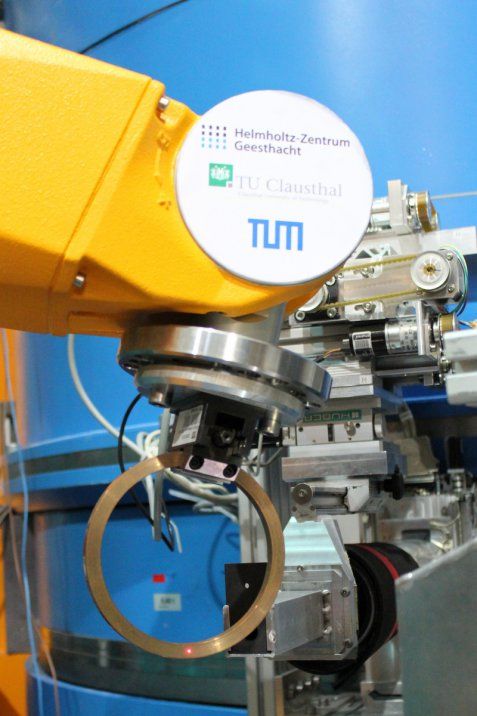MLZ is a cooperation between:
 > Technische Universität München
> Technische Universität München > Helmholtz-Zentrum Hereon
> Helmholtz-Zentrum Hereon
 > Forschungszentrum Jülich
> Forschungszentrum Jülich
MLZ is a member of:
 > LENS
> LENS > ERF-AISBL
> ERF-AISBL
MLZ on social media:

MLZ (eng)
Lichtenbergstr.1
85748 Garching
Non-destructive testing of components and materials
Using neutron beams for non-destructive testing enables us to view inside large or complex objects. A big advantage is the specific contrast of different chemical elements or even isotopes for the neutrons. By this one can observe even a small amount of hydrogen containing materials like glues or lubricants inside a metallic object. As an example, neutrons can see the oil in a running car engine or the distribution of sealing glue in an entire car door. In high resolution mode, structures less than 100 micrometres are visible.
A second application goes down to the atomic scale. In contrast to the direct imaging of objects, the deviation or scattering of the neutron beam by the material under investigation enables us to determine the average distance between atoms. Averaging over volumes as small as one cubic millimetre (typically 1 mm3 < V < 8 mm3) shows us the distribution of inner stresses inside technical objects. Examples cover the investigation of welds, crankshafts or cylinder heads from automotive industries or severe deformed rails.
Modern materials exhibit a complicated and optimized microstructure and are often composed of a large number of metallic elements. Especially for the application at extreme conditions like high temperature or heavy load, the designed microstructure has to resist the foreseen technical application. As neutrons penetrate not only the material under investigation but also surrounding equipment, in-situ studies of the composition and morphology of materials under extreme conditions are routinely performed at the MLZ.
MLZ is a cooperation between:
 > Technische Universität München
> Technische Universität München > Helmholtz-Zentrum Hereon
> Helmholtz-Zentrum Hereon
 > Forschungszentrum Jülich
> Forschungszentrum Jülich
MLZ is a member of:
 > LENS
> LENS > ERF-AISBL
> ERF-AISBL
MLZ on social media:




